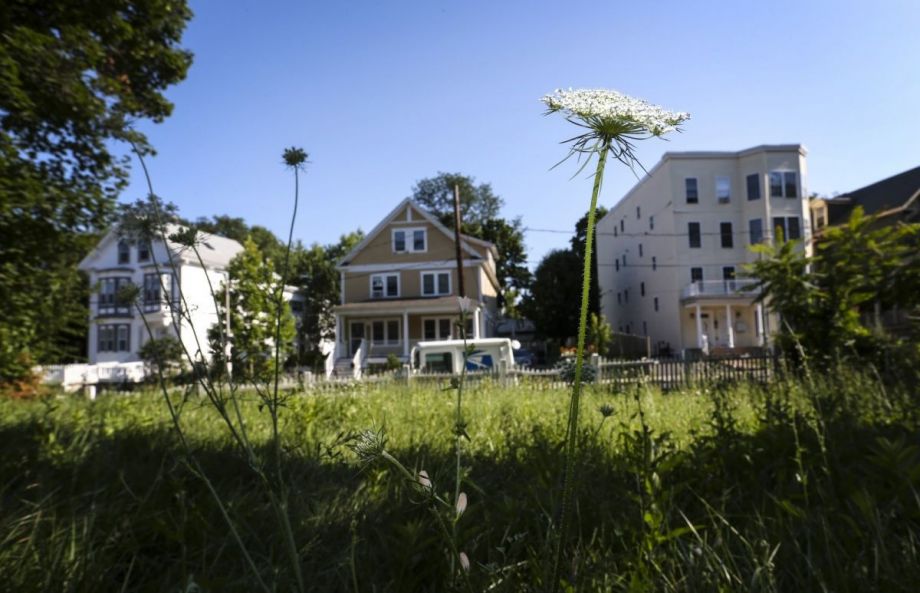If the hundreds of cities that have signed on to the Compact of Mayors or other climate action commitments follow through on their promise to stem carbon emissions, their work will start with creating greenhouse gas budgets and specific plans. And that requires a solid foundation of environmental research, a job for which the emerging field of urban earth science might be up to the task.
Lucy Hutyra, associate professor in Boston University’s Department of Earth & Environment, says urban areas have historically been overlooked by traditional earth scientists because they are by nature difficult to control.
“In cities there are so many constraints on field observation and experimentation for very valid reasons,” she says. “In cities you have all of these factors you can’t control for.” The built environment, for one. A certain two-legged mammal, for another.
“When we work in a city, we have to also take into account people,” says Pamela Templer, associate professor in BU’s Department of Biology.
Biological processes — photosynthesis, decomposition, nitrogen uptake and depletion, for example — are all increasingly being recognized as part of the urban infrastructure. In Boston, for example, Templer notes that a considerable tree canopy helps mitigate the heat island effect and assists with carbon sequestration. “It’s not trivial,” she says.
But working in cities poses certain constraints. On several occasions, Hutyra has located studies in other professors’ backyards, where she knows her equipment won’t be tampered with, but that means the sites aren’t a random sample. When Million Trees NYC started removing sidewalk pavement to create new tree boxes, Hutyra and a post-doctoral student were invited to take soil samples of the newly uncovered earth, some of which had been entombed for over 100 years. But there was no obvious undisturbed control site. They ended up sampling non-entombed soils wherever they could find them.
“It was far from perfect,” says Hutyra, and she’s up front about that in her research. But the results were intriguing: The soil’s carbon was depleted by around two-thirds and its nitrogen by 95 percent. That meant the city needed to increase the depth of its excavations to backfill with more nitrogen-rich soil, but the finding could also have implications worldwide. If those numbers hold true in other locations, “that’s a lot of soils that are basically sterile now. And that carbon is gone so it’s contributed to the climate problem that we now have,” says Hutyra.
As cities go to work on their climate plans, Hutyra and Templer agree, they’ll benefit from greater access to this type of research. In Boston, for example, a study they conducted together found that while fossil fuel combustion was far and away the biggest source of CO2 in the center of the city, in the more residential areas emissions from soil were nearly on par. Templer attributes that finding to the overapplication of store-bought fertilizers. Mayors are doing a great job focusing on emissions in their climate plans, she says, “but for the most part, if not everywhere, they only focus on human emissions of CO2 like fossil fuel combustion.” If, instead of raking them all away, Bostonians were to keep some of their fallen leaves each autumn to use as natural mulch, it could have an impact on CO2 emissions too.
Technology also plays a role in this field.
“There’s an explosion of big data in cities that can be applied for earth sciences in really novel ways,” says Hutyra. She and a Ph.D. student have been working with the city of Boston to build a block-by-block air quality model using a cellphone data set. Next, they want to use another data set to track where people are walking, in order to see where the highest emissions overlap with highest pedestrian use.
Boston has the staff and technical expertise to work on projects like this, but not all cities that have signed on to create climate plans and curb emissions do. Hutyra and her team recently did a project with the city of Providence, Rhode Island, which has a very motivated sustainability office of two people. In Providence and in other cities, she’s helping to make on-the-ground measurements of CO2 levels and comparing them to satellite readings.
“I think it’s about getting students to think differently about what ecology means,” says Hutyra. BU doesn’t have a concentration in urban earth science exactly, but in an urbanizing world, she tries to encourage her students to look more broadly at the tools of their field and how they can be applied to problems right around the corner. “We’re surrounded by these interesting problems and students are really capable of contributing to them” in ways that both impact their local neighborhoods and add to the base of scientific knowledge about urban ecology. “We have so much more to learn,” she says.
Jen Kinney is a freelance writer and documentary photographer. Her work has also appeared in Philadelphia Magazine, High Country News online, and the Anchorage Press. She is currently a student of radio production at the Salt Institute of Documentary Studies. See her work at jakinney.com.
Follow Jen .(JavaScript must be enabled to view this email address)
















